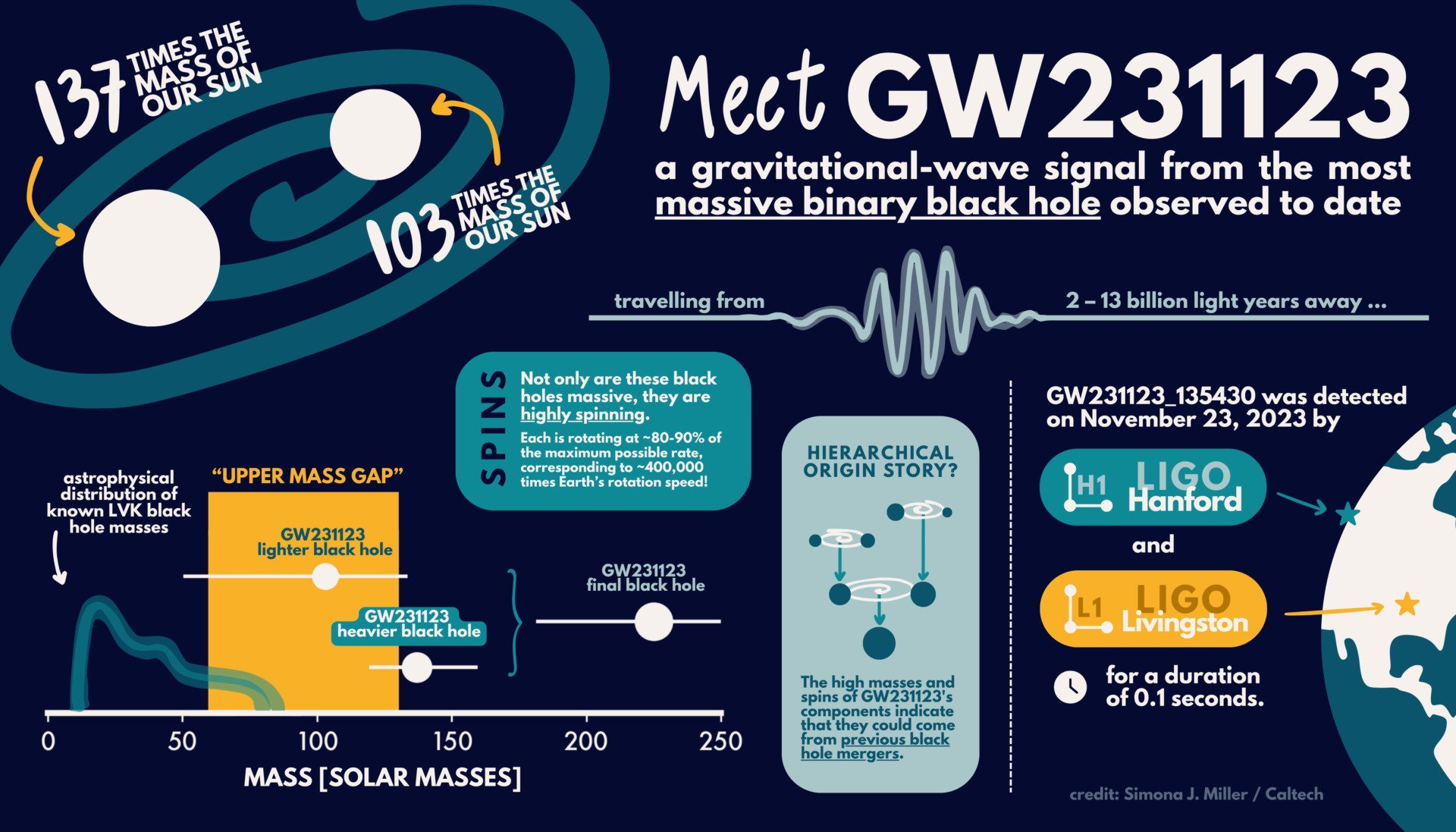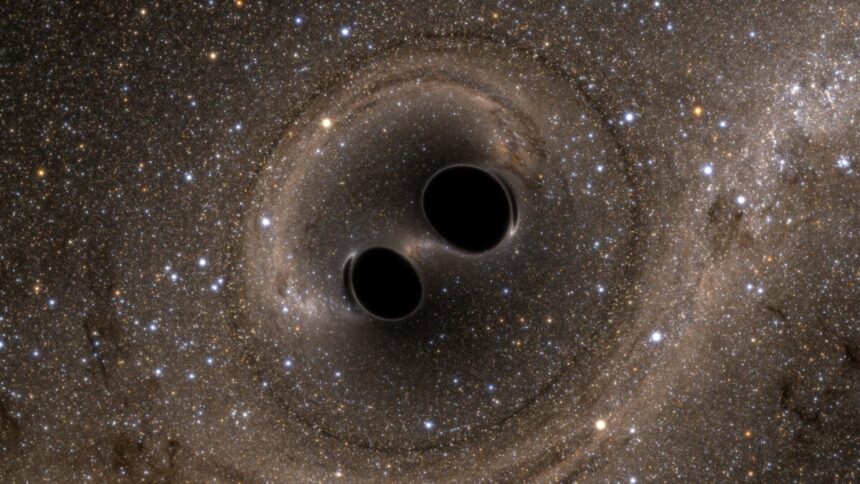Gravitational waves—ripples in space-time caused by violent cosmic events—travel at the speed of light in every direction, eventually fading out like ripples in water. But some events are so destructive and extreme that they create disturbances in spacetime more like powerful waves than small ripples, with enough energy to reach our own detectors here on Earth.
Today, the LIGO Collaboration announced the detection of the most colossal black hole merger known to date, the final product of which appears to be a gigantic black hole more than 225 times the mass of the Sun. Much about this signal, designated GW231123, contradicts known models for stellar evolution, sending physicists scrambling to apprehend how such a merger was even possible.
LIGO, or the Laser Interferometer Gravitational-wave Observatory, made physics history in 2015 by detecting gravitational waves for the first time, capturing the cosmological echo of two colliding black holes. Since its Nobel-winning discovery, the LIGO Collaboration, an international partnership between LIGO and Virgo and KAGRA in Italy and Japan, respectively, has continued its meticulous surveillance of the galaxy. The collaboration has detected numerous signals from neutron stars, supernovas, and some 300 black hole mergers.
But GW231123, first observed on November 23, 2023, seems to be an unprecedented beast of a black hole merger. Two enormous black holes—137 and 103 times the mass of the Sun—managed to keep it together despite their immense combined mass, spinning at 400,000 times the speed of Earth’s rotation to form an ever bigger black hole. To put its size into perspective, the previous record holder for such a merger, GW190521, is roughly 140 times the mass of the Sun.
Considering the gravitationally chaotic nature of black hole environments, with their pushes and pulls, it’s remarkable that this merger was stable enough for the resulting gravitational waves to reach LIGO, which detected the signals for a duration of 0.1 seconds. Such episodes should be “forbidden” according to standard evolution models, said Mark Hannam, LIGO member and physicist at Cardiff University, in a statement.
“One possibility is that the two black holes in this binary formed through earlier mergers of smaller black holes,” he surmised. “This is the most massive black hole binary we’ve observed through gravitational waves, and it presents a real challenge to our understanding of black hole formation.”

“The black holes appear to be spinning very rapidly—near the limit allowed by Einstein’s theory of general relativity,” explained Charlie Hoy, LIGO member and physicist at the University of Portsmouth in England, in the same release. “That makes the signal difficult to model and interpret. It’s an excellent case study for pushing forward the development of our theoretical tools.”
Scientists will present their findings about GW231123 next week at the 24th International Conference on General Relativity and Gravitation (GR24) and the 16th Edoardo Amaldi Conference on Gravitational Waves, held jointly as the GR-Amaldi meeting in Glasgow, U.K. Following that, the data will be out for public scrutiny, kicking off the race to unravel GW231123’s mystery—though it’s unlikely we’ll have a clear answer any time soon.
“It will take years for the community to fully unravel this intricate signal pattern and all its implications,” added Gregorio Carullo, also a LIGO member and physicist at the University of Birmingham, England. “Despite the most likely explanation remaining a black hole merger, more complex scenarios could be the key to deciphering its unexpected features. Exciting times ahead!”
Physicists first conceived of gravitational waves as early as the late 19th century, but the idea gained popular momentum thanks to Albert Einstein. As one of the few observational methods that doesn’t need light to “see” cosmic phenomena, gravitational waves are unmatched in their potential for helping humanity uncover the many mysteries of black holes, ancient stars, and even dark matter. So, indeed—exciting times ahead!
Read the full article here












